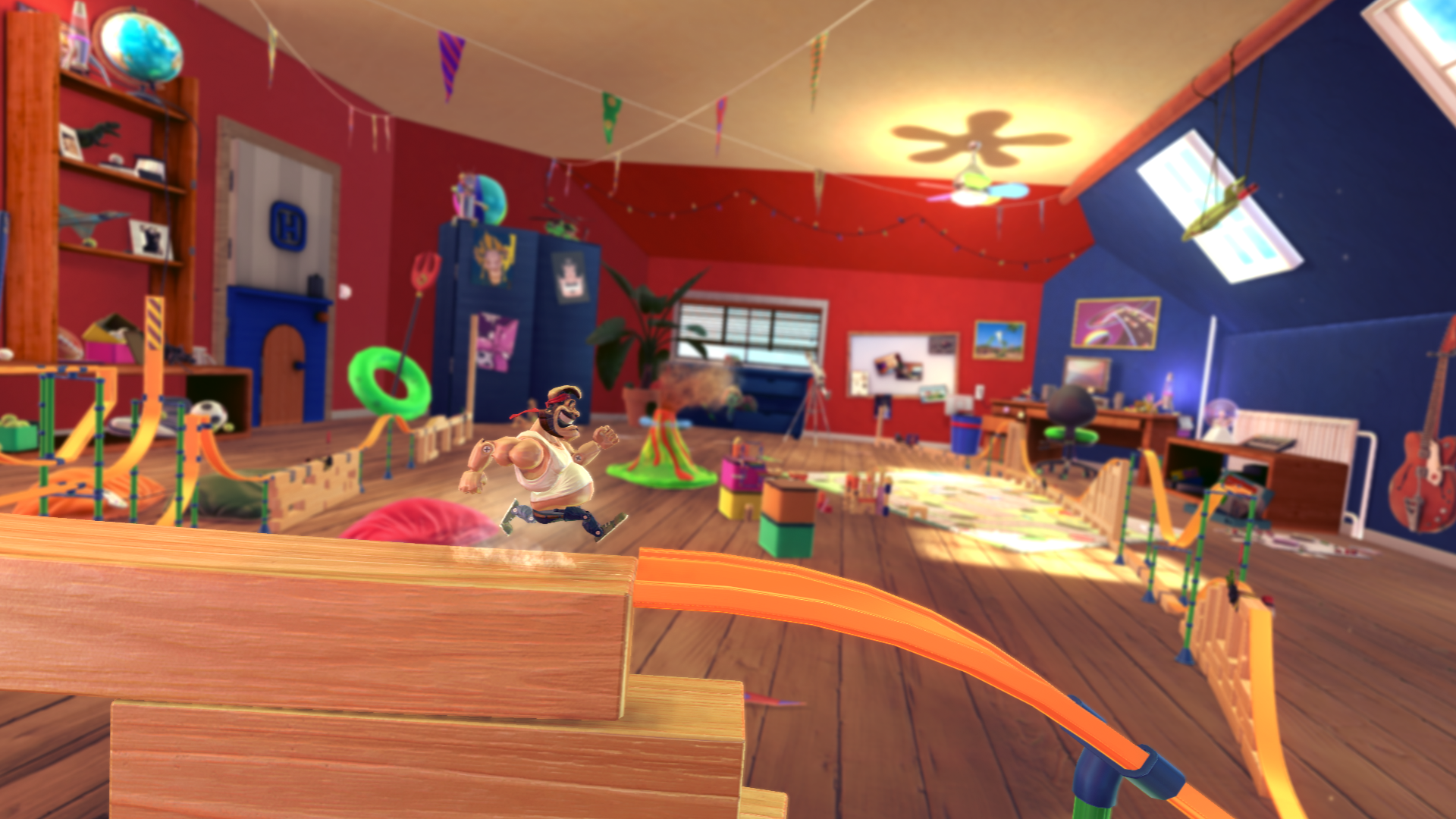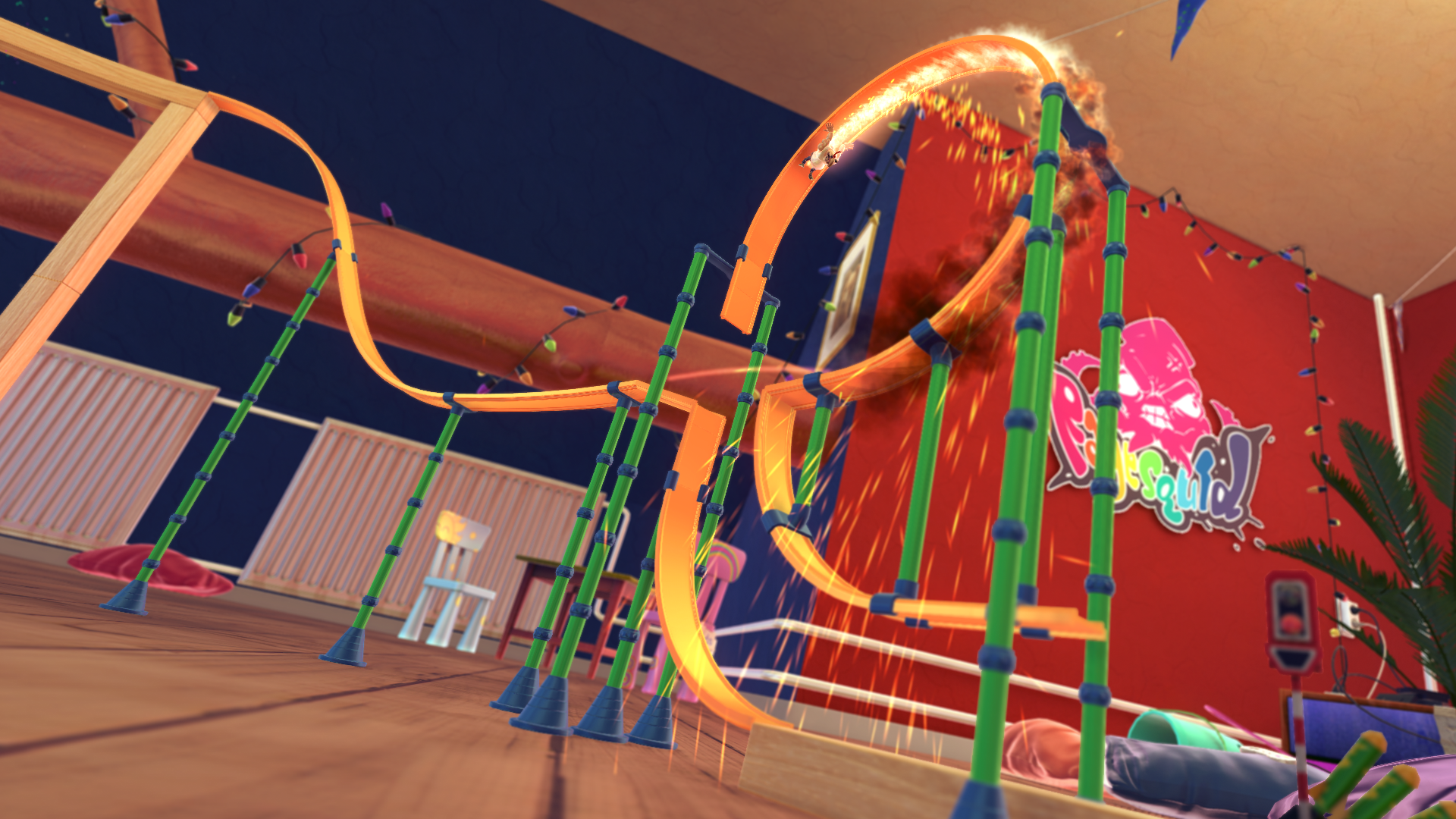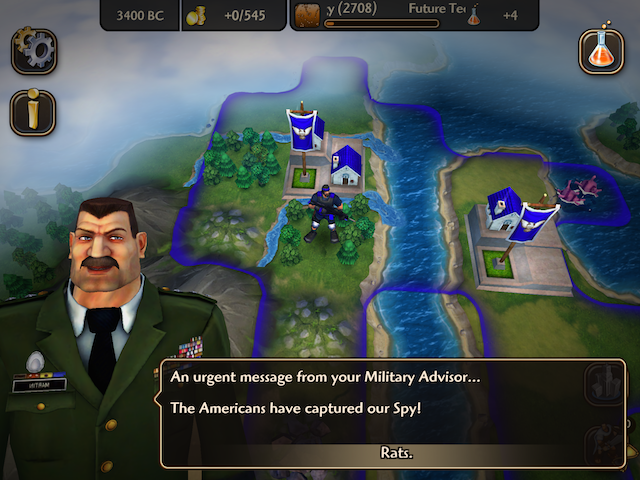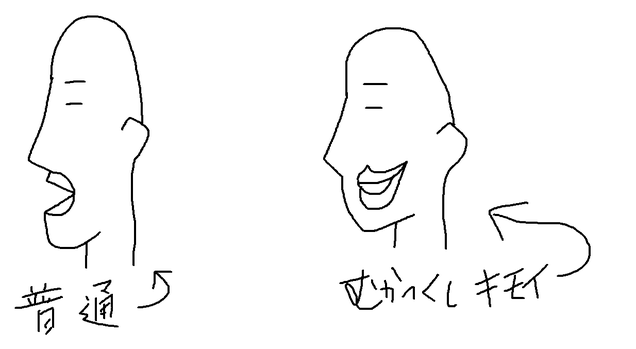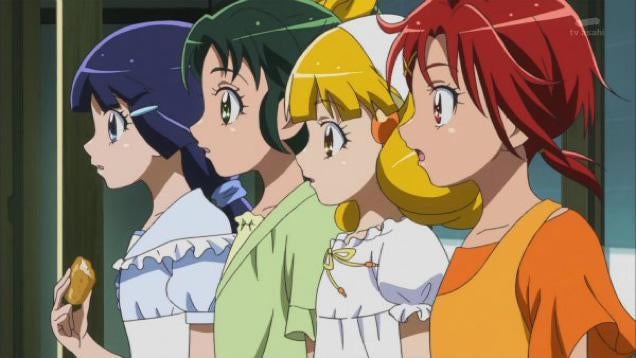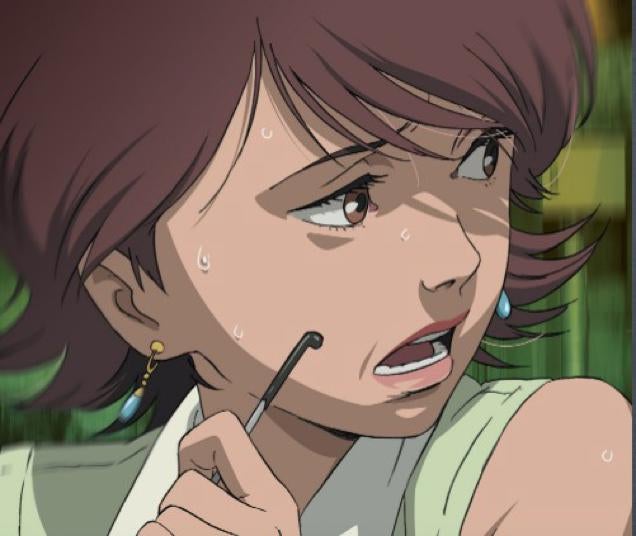Polygon's Culture
section deals with the intersection of gaming, its audience and pop
culture as a whole. This is where we'll put non-gaming stories we think
are worth talking about.
Transformers: Age of Extinction made $300 million in its first
weekend of release. That number is insane, even by the standards of a
Hollywood blockbuster, and shows the power of an international opening
weekend.
The movie took in $90 million in China, an industry record. Not
counting marketing spend, the movie has already made back its budget and
will likely be profitable overall by next week if this pace continues.
The fourth Transformers movie is one of the biggest hits of the year.
It's also one of the worst-reviewed movies of the year, with critics
getting out their sharpest barbs to heap scorn on a film that's seen as
loud, nonsensical and pandering. The reviews don't matter, though; the people who showed up and bought their ticket tell the story, especially overseas.
The importance of the Chinese market has become an interesting story when it comes to these films with huge budgets, and
Chinese appeal is baked into the movie when possible. There was
an entirely different cut of Iron Man 3 for China, and Paramount was careful to shoot part of
Age of Extinction
in China and to feature a high-profile Chinese actor. The Chinese
audience was courted just as hard as the United States, and it paid off.
The larger the budget of your film, the more likely the studio will "ask" you to make it attractive to Chinese audiences.
Wikipedia describes Age of Extinction as an "American-Chinese science fiction action film."
There's a story here that's more interesting than "stupid people like
stupid movies," and that's what I'd love to explore. Why are these
movies, which everyone seems to agree are terrible, such big hits?
This
isn't
Pacific Rim, which was a fun, well-crafted movie that struggled to justify its budget
while also making overtures to Chinese audiences; this is an example of one of the biggest film releases in the history of cinema. For a movie everyone claims to hate.
What's going on?
Chris Plante
Transformers movies are, arguably, universally loved. Yes, I know
that statement flies in the faces of a couple dozen critics, but let's
look at the numbers. You already mentioned the $300 million worldwide
opening. Domestically, the film made $100 million, the biggest domestic
opening of the year so far. The audience — 64 percent male, not nearly
as lopsided as one might expect —
gave the film a CinemaScore of A-.
You mentioned the film's popularity in China, but that ignores the fact
that it hasn't even opened in much of Europe and Latin America. Many
trades predict the film will break the $1 billion mark. Looking at those
numbers, our debating the merits of the film is a "critic" thing to do.
To the rest of the world, the success seems so obvious.
Wikipedia describes Age of Extinction as an 'American-Chinese science fiction action film'
But yes, I hear you, there must be something more to the popularity
of Transformers than the fact that it has robots and they fight one
another. If that's all it takes, we'd be talking about
Real Steel 2: Realer Steel.
Successful summer movies aren't so different from successful AAA video games.
They build upon proven hits, applying increasingly larger budgets to
create increasingly spectacular setpieces that will be spliced together
into trailers appearing in increasingly more expensive commercial slots
and partnering with increasingly richer brand partnerships, until the
property is culturally ubiquitous.
Let's be specific, though, about Transformers. I think it helps to
place the franchise in the context of other similar hits. What do they
have in common? What makes money at the movies these days? Franchises.
Sequels. Nostalgia. Apocalyptic stakes.
I think all of these components are triggers that hit different
corners of the market. Some people watch Transformers to reconnect with
their childhood, others because it's a familiar action series that they
associate with 'things we do in the summertime' and others — and this is
on a subconscious level — take pleasure in watching a world like ours,
but in which the lines between good and evil are clear, and good
triumphs all.
Anxiety is the skeleton of popular mainstream action films. Romance,
character development and badass fight sequences are the organs and
muscle that bring these films to life, but the frames on which the
Captain Americas and Transformers and Godzillas are built upon is a
genuine fear of our current place in the world. Large, unknowable, often
irrational forces are hellbent on destroying our way of life, and it
will take an equally large, unknowable, but ultimately good force to
keep them at bay.
This was most obvious in last summer's
Man of Steel, in which Superman and Zod shared a 9/11 moment amid the streets of Metropolis.
The Avengers
is equally guilty of using this loaded imagery, though it does it with
more grace and humor. Which is admittedly grim, now that I've written
it.
In the '80s and '90s, action movies were smaller. Usually one man
continued to fight off a stale remnant of the Cold War. Somebody dressed
like a Russian commander or Italian mob boss or German troop would get
his face smashed in by the hour and thirty mark. Occasionally we'd get
domestic villains that were commentaries on domestic problems, like the
treatment of police and military veterans in
Speed and
The Rock, respectively.
I miss those days, both in terms of movie quality and my general
anxiety about the world blowing up at any minute. But I don't know if
we'll get that back. We now live in a world where we think about doom
whenever we watch the news. So we turn to Transformers, to watch a bunch
of robots save us from the apocalypse.
Two parting thoughts before I send this back to you:
- Historically, the great works of civilization have been created
while artists looked into the abyss. Maybe our progeny will look back at
Transformers in the textbooks and speak of Michael Bay as the
millennial Shakespeare. I mean, Pain and Gain wasn't so bad? Right? Right?
- How ironic that we watch robots save us, when it will almost certainly be robots and drones and artificial intelligence that turn us into their pets.
Ben Kuchera
First off,
Real Steel was amazing.
The humor and themes of the Transformers movies are almost impossibly
broad, from the weird racial caricatures of those tiny robots in the
second movie to the liberal use of robotic urine to make a point. There
are no setups to these jokes; you don't have to pay attention to get
them. These are the basest attempts at humor you can possibly imagine,
which means they're going to play at least passably to every possible
audience.
Also, there's a great case to be made about Michael Bay's abilities as a filmmaker.
The Rock and
Armageddon were both released in the Criterion Collection, and they're more or less required viewing for anyone who works in action films.
"It is never confusing, never boring and never less than a brilliant
mixture of what movies are supposed to do: tell a good story, depict
characters through active events, invoke an emotional response and
entertain simply and directly, without pretense,"
film historian Jeanine Basinger wrote about Armageddon.
I'd argue that Bay's earlier movies were much, much better than the
Transformers series, and Bay may very well be locked into the same
prison cell of success with the series that Hideo Kojima finds himself
in with the Metal Gear series.
There's a case to be made about Michael Bay's abilities as a filmmaker
The Transformers series has long felt like the work of someone who is
getting a huge paycheck but isn't emotionally invested, but each shot,
taken individually, shows Bay knows how to craft a moment that gives you
an instant emotional payoff. The color palette is always designed to be
as striking as possible, which is
why everyone tends to look orange, and the camera moves and frames each moment in such a way that you know exactly what you're supposed to feel.
These movies don't make the audience feel clever, but they do make
the audience feel the right thing for each scene. There is no language
to decode, no hidden meanings; you can sit back in your chair, go
completely limp both physically and mentally and understand exactly what
you're supposed to feel about each moment, character and plot point.
Modern Michael Bay action scenes are filmed like a car wreck from the
inside: Everything happens fast, it's impossible to understand and your
best bet is to go limp and see what happens. They don't make a ton of
sense visually, but you understand huge, powerful things are slamming
into each other. This is all the audience needs in a movie about giant
talking alien robots that turn into cars and planes.
None of these things are easy to do, and this is why
directors like James Cameron have reportedly
"reverse-engineered" Bay's style. The director isn't looking to elevate
the art form, but he's able to nail what he's after with remarkable
precision and skill.
Neither of us have seen the latest one — we're just going off the
reviews and the first three movies — but I'm curious about how you feel
coming out of a Transformers movie.
Chris Plante
Desensitized? Yeah, that's probably the right word. Or maybe I should
say exhausted. These movies are long. Really long. I like schlock like
this, but the latest film's 165-minute run time has kept me out of the
theater.
And that, I think, is the best argument against the notion that Bay
is phoning in these films for the pay day: The only reason these films
are so long is because Bay wants them to be. There are plenty of reasons
to be cynical about the series, but length isn't one of them. Because
everyone stands to benefit from these films being shorter.
The shorter the film, the more times it can run in theaters —
especially the extremely profitable but limited in number IMAX theaters.
A 165-minute run time means fewer showings and a more expensive film.
Every minute of Transformers spells more robots, more computer
animation, more budget.
I believe Michael Bay genuinely believes he's creating art here — pop art, but art nonetheless. And if you read any
profiles of the director, which, wow, you should, you'll see his conviction to the craft is real.
The only reason these films are so long is because Bay wants them to be
I spoke about the sense of relief we get watching heroes save the
world. I think there's one other hodgepodge of escapism and fantasy at
play here, and I know you're planning on hitting part of this in your
last brief, so I'll set the alley-oop. Michael Bay is the master of the
American male fantasy.
Bay's films are, broadly, about the exceptionalism of the uber-dude. Nic Cage in
The Rock, Shia LeBeouf in original recipe
Transformers, Mark Wahlberg in
Pain and Gain and
Transformers
extra crispy: They're normal dudes if normal dudes were preternaturally
prepared to become superhuman in the span of a couple hours. We are
normal, these films say, until we fulfill our destiny and become
exceptional. America, fuck yeah.
These stories of dudes becoming the dudes they were always meant to
dude are then garnished with the passions and insecurities of the
standard white bro: patronizing racial stereotypes, blunt xenophobia,
casual homophobia and an aversion to women.
Let me be clear: Women don't exist in Bay's movies. Instead, he
populates his world with frisky moms, damsels in distress, emotionally
damaged daughters and stripper coeds. The talking robots are more human
than these walking female stereotypes. You'll see this in Sam's trip to
college in
Transformers 2, where all the men are average and all the women are Victoria's Secret models.
The same thing happens in the inspirational speaker event in
Pain and Gain,
where the men are grotesque and overweight, but the women, again, look
like they're Maxim covers brought to life. I guess there are some other
women, though their existence is as a cruel punchline at the expense of
their experience. The Bay canon has the grace of a brown bag full of
porn.
Looping back, that 64 percent of the domestic audience this weekend
was male doesn't surprise. That 36 percent was anyone other than a dude
does. That's my real question: Who are these people that suffer through
the ugly representation of the majority of the world's population just
to see a robot wielding a sword while riding a dinosaur? I worry that
the answer is they're us. A majority of people are totally OK with
having their personal beliefs and politics trampled by a Dinobot.
(
Update: At the request of a commenter, I'll unpack
that idea, because I agree that it deserves to be better explained. When
we watch a movie like Transformers or
The Dark Knight, we're
also watching how a director and writer view the world. These movies are
loaded with philosophical worldviews and political stances, running the
spectrum: liberal and conservative, nihilistic and moralistic. But when
we go to the movies, many viewers are comfortable ignoring this side of
the work. They might even argue it doesn't exist, that it's just
flavor.)
There you go, an alley-oop.
Ben Kuchera
These aren't just male fantasies, because Hollywood is full of those.
These are, specifically, conservative male fantasies, and that's a
point of view that's normally completely ignored in Hollywood. In
Michael Bay movies, it's the blue-collar men who save the world while
the incompetent or ineffective government watches. We're all single dads
who look like Marky Mark inventing things in our garage, until it's
time to be an action hero.
The Rock featured a dorky scientist — who, of course, is in a
relationship with a once-prom queen because in Bay's films every
character gets the supermodel — who comes to life when he's put in
situations that require him to kill people. If you would just let me out
of this lab, away from my vinyl, I could be an action hero as well.
These are, specifically, conservative male fantasies, and that's a point of view that's normally completely ignored in Hollywood
Pain and Gain deals with men who spend all their time working
on their bodies, and they believe that somehow good things will come to
them because they're good people. It's a series of characters who
believe that life has friend-zoned them, and it's time to stop being the
nice guy.
The Transformers series delivers the work of a director who knows
what he's doing, knows how to get his point of view across and panders
to an underserved market while providing perfect popcorn movies that
require no thought and offer the maximum emotional payoff. They deliver
their messages with the strength and subtlety of a hand grenade: You are
smarter than your bosses, you deserve the most attractive women in the
world and if circumstances were different you'd be the biggest hero this
world has ever seen.
It's not a cynical ploy, because as you pointed out, Michael Bay
actually believes all these things. That belief is infectious,
comforting and worth the $12 movie ticket to people who want to watch a
beautiful, focused movie about the "hidden" greatness of the American
male.
Source: Polygon










